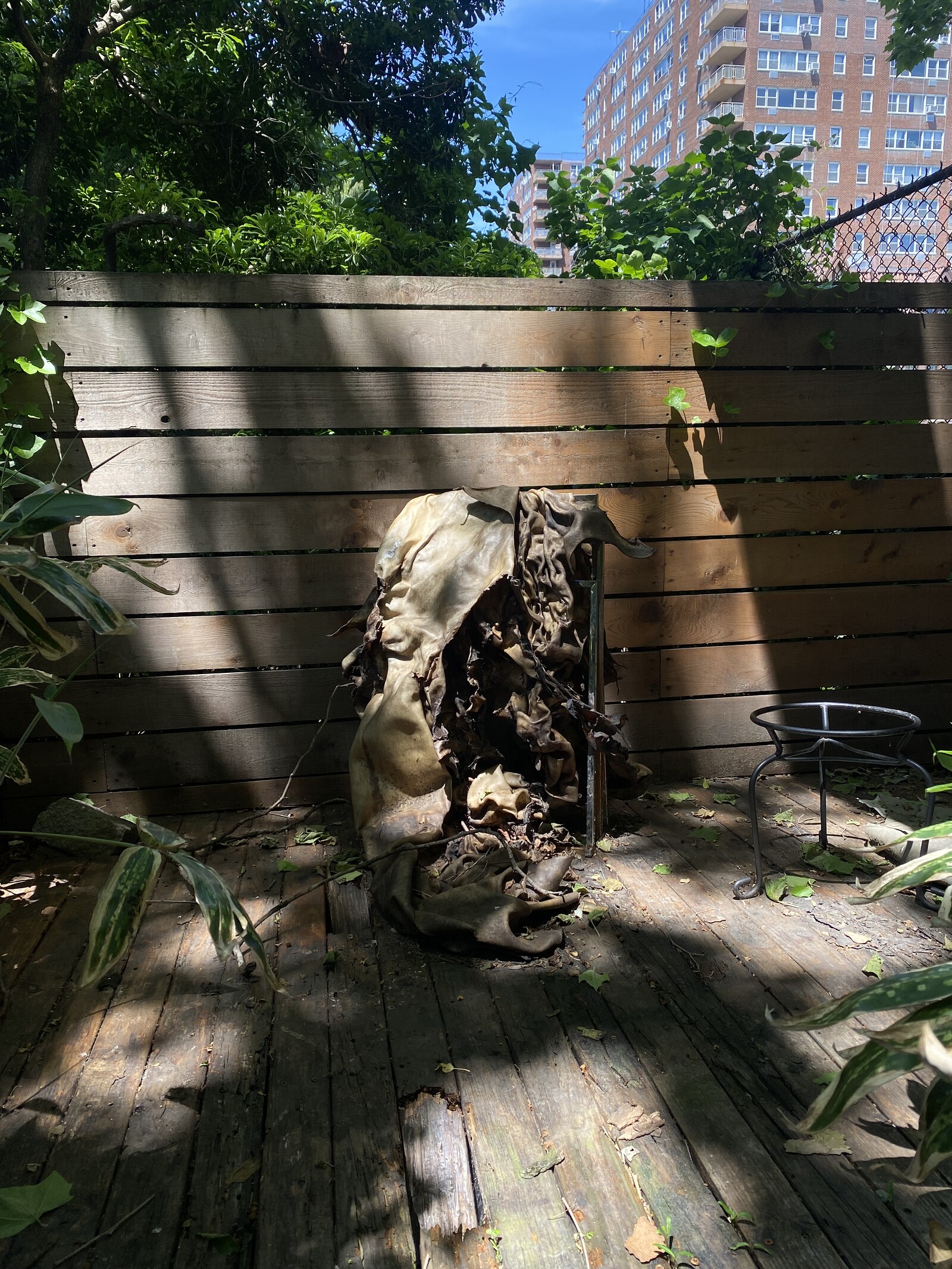July 17–September 11, 2022
Markt 1
4331 LJ Middelburg
The Netherlands
Hours: Wednesday–Friday 1–5pm,
Saturday–Sunday 11am–5pm
T +31 118 652 200
office@vleeshal.nl
Artists: Christopher Aque, Aria Dean, Rindon Johnson, Claudia Pagès
Curated by: Yaby (Beatriz Ortega Botas and Alberto Vallejo)
Some of It Falls from the Belt and Lands on the Walkway Beside the Conveyor has to do with what exceeds normal flow. The image of a conveyor belt that the title describes draws out some of the ideas behind this group show: a context that determines how things move forward (a well-oiled system where all circulates according to preset parameters); accumulation, waste and spillage within it, not quite halting circulation but always swirling it a little; and the possibility of withdrawing from normal flow and finding some space to take up in its near surroundings.
All the works in the show deal with residue on different levels: whether literal waste and flows of excretion, secondary products generated by the operations of larger primary systems, the omitted role of the industrial management of death in the formation of Modernism, or residual navigations of public space that transcend its intended socialization. In addressing the significance of frictions between remainder and context, these works necessarily point to the place that contains them too: Vleeshal used to be the meat market of the former town hall, a gothic civil building used in the center of an old port city deeply ingrained in the history of colonial trade, political power and cultural hegemony. This exhibition space that is marked by commerce and governance is itself a context dense with codifications regarding the assignation of value, the funneling of desire, and the distribution and interplay of bodies and meanings.
Cow rawhide, a central material in Rindon Johnson’s work, has a particular closeness to its milieu that is akin to the context-dependence of bodies and meanings—a by-product whose very existence is the leftovers of a prior system (the meat industry). This untreated skin bloats with rainwater, stretches, stains, rots, and then dries out stiffening into a different shape.
Christopher Aque investigates visuality and erotics in the public milieu, looking at how desire disregarded by dominant forces moves through spaces that were not built to accommodate it. Dissident desires share many optical strategies with the surveillance systems that threaten to suppress them—their visual modes are in close proximity (the hunt, the camouflage, the disclosure, the scanning, the lookout for patterns and clues). Erotic charge coexists with systems of power in the public sphere, and the personal overlaps with the genericity of these structures without necessarily altering their normal workings.
Small-scale instances of dissent take place in the vicinity of the larger-scale operations that sustain the State. Customs management and systemic operations alike share a linguistic common thread: they are always expressed in the gerund, a verbal tense that has no person, no beginning and no end. Claudia Pagès addresses the indeterminate present held in suspension by means of this parlance, and how bodies get violently trapped in it. But near container ports there are always residual flows with their own specific codes and dynamics and their own trickling of time.
Aria Dean examines the conceptual and material relationship between Modernity and death. Historical accounts of Modernist architecture have obscured the determining role of the slaughterhouse in its early development: agricultural constructions designed to optimize animal slaughtering and carcass waste disposal inspired the creators of the modern style, who abstracted and aestheticized the sharp functionality of the abattoir and its efficient organization of bodies in space. In Dean’s work, slaughterhouse mechanisms engineered to be activated by dead load are formally recreated as frames for her engravings in rubber —a material used for erasure, absorption and pipe lining.


